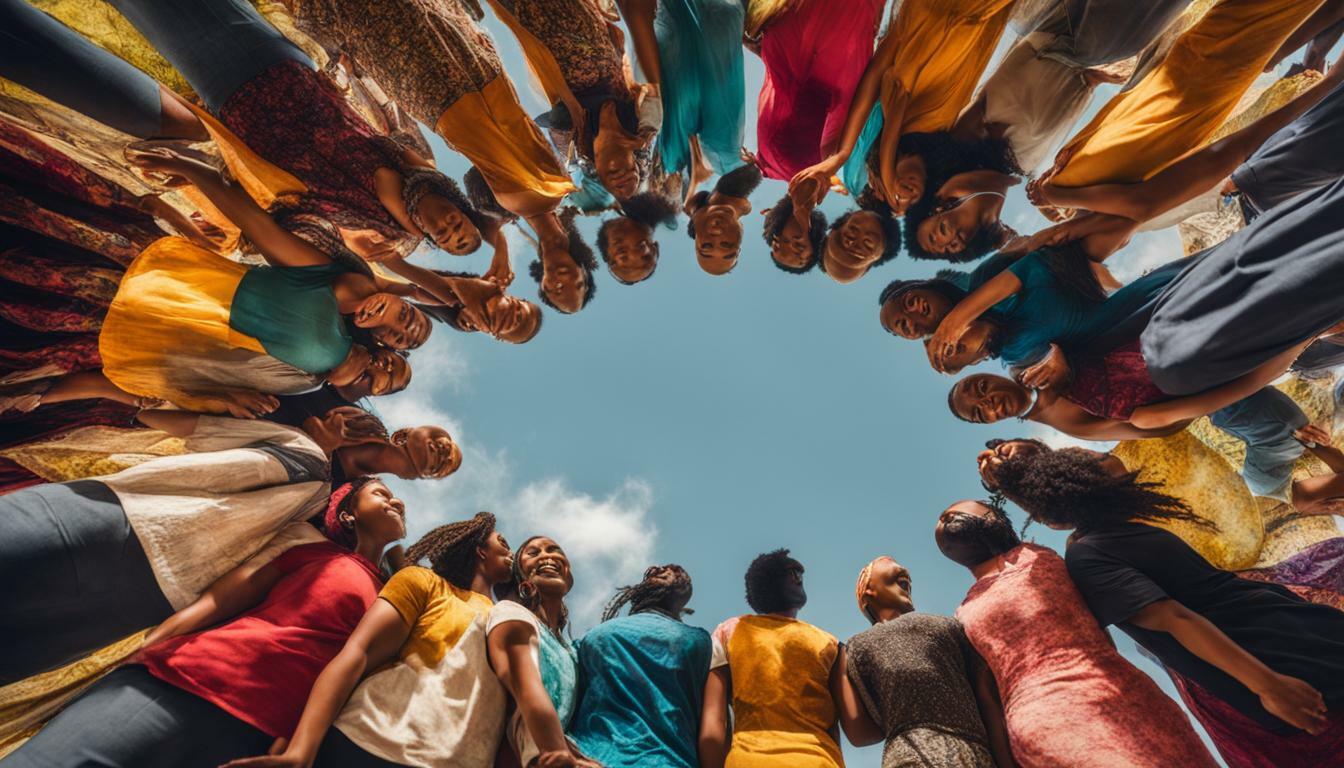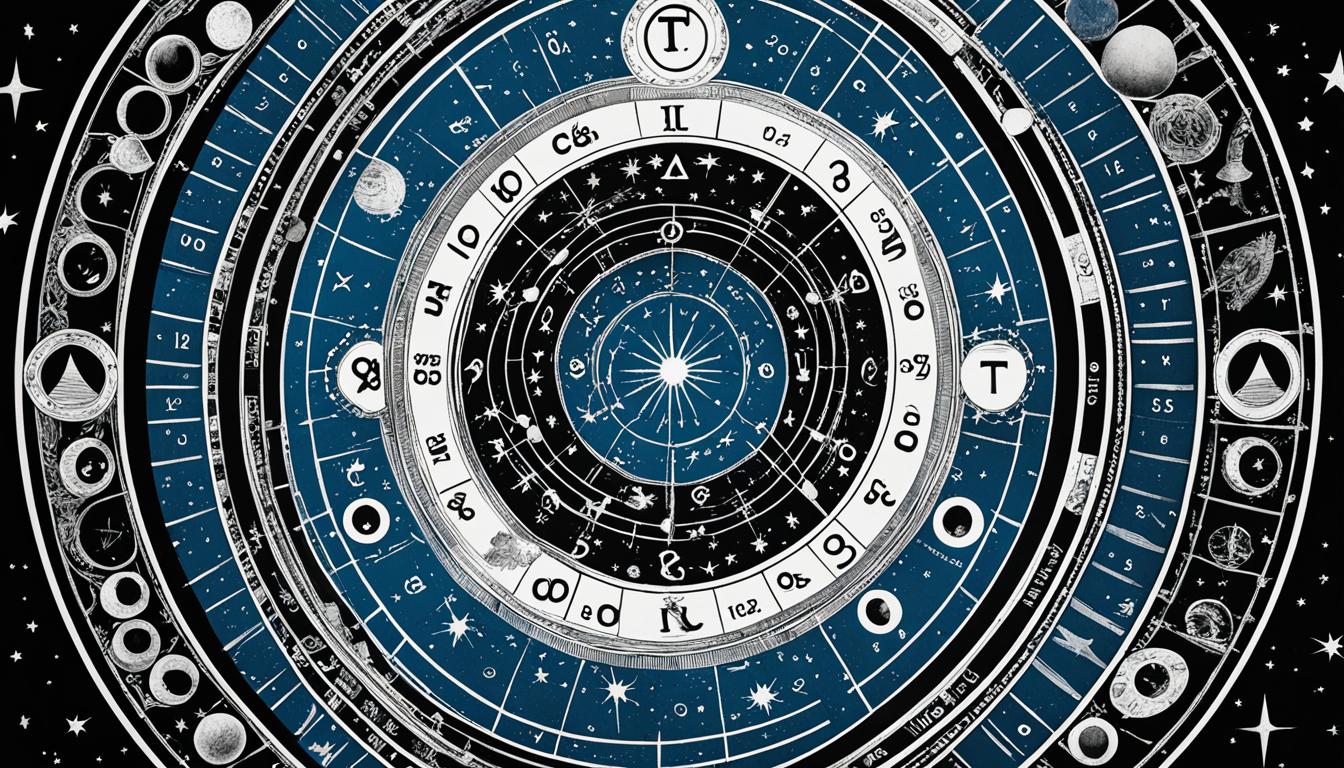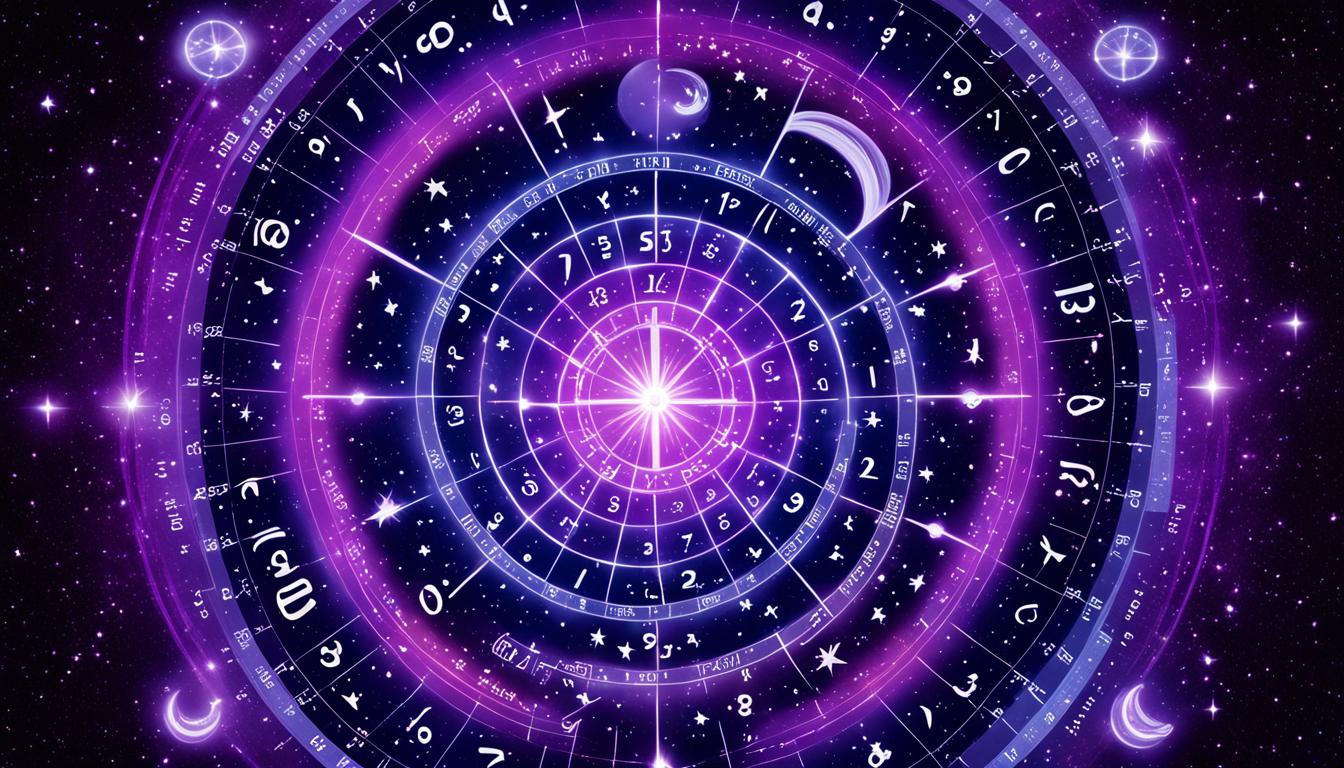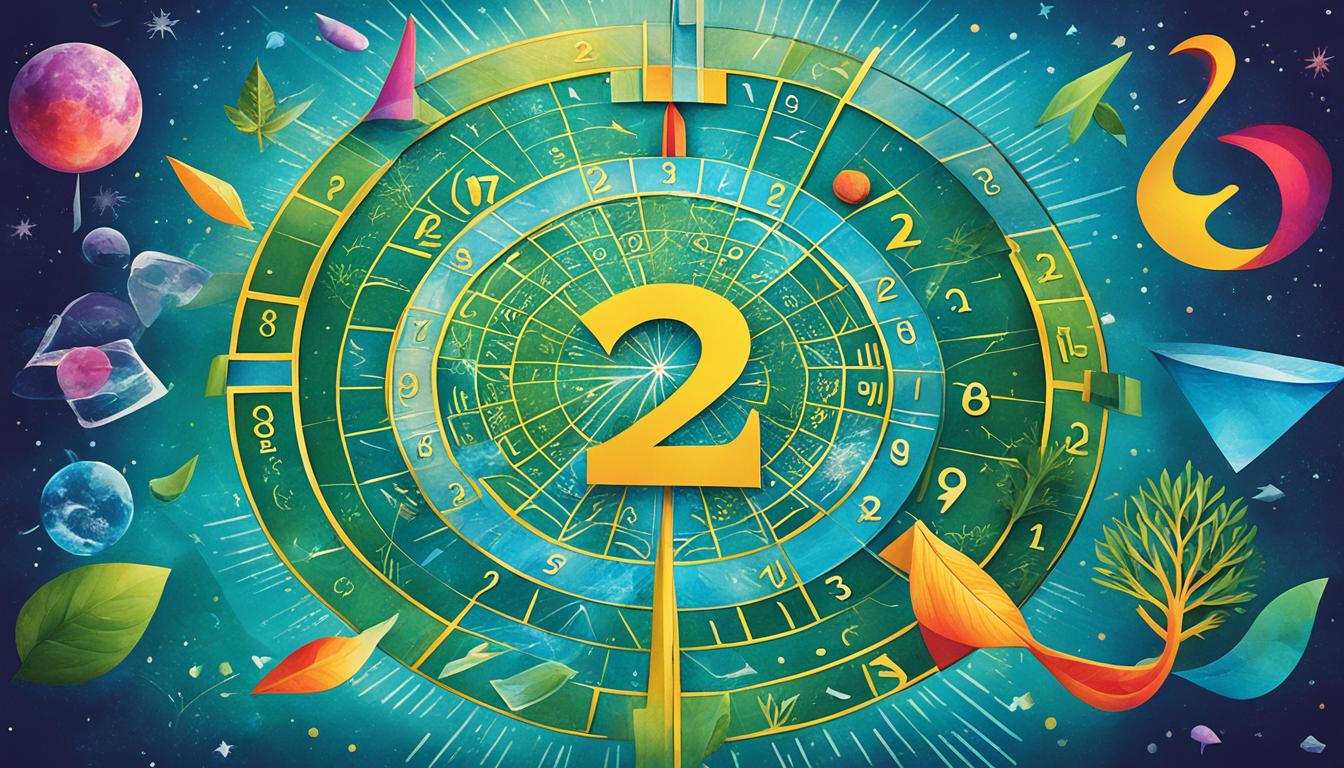The collective energy meaning refers to the idea that there is a collective or shared energy that exists among individuals and groups. This energy can influence and shape our individual experiences and interactions with others. It encompasses various aspects of psychology, spirituality, and even physics, highlighting the interconnectedness and power we possess as a collective whole.
Understanding collective energy is essential for unlocking its potential and harnessing its power. Whether we realize it or not, we are constantly exchanging and absorbing energy from those around us, creating a dynamic web of interconnectedness. By delving into the concept of collective energy, we can gain a deeper understanding of our place in the world and how our energy impacts those around us.
Key Takeaways:
- Collective energy meaning refers to the shared energy that exists among individuals and groups.
- It influences our experiences and interactions with others.
- Collective energy encompasses psychology, spirituality, and physics.
- Understanding collective energy is crucial for harnessing its power.
- We are interconnected and constantly exchanging energy with those around us.
Exploring Interconnectedness in Collective Energy
To unravel the collective energy meaning, it is important to understand various concepts and perspectives. One such concept is the idea of interconnectedness. Interconnectedness refers to the notion that everything in the universe is interconnected, influencing and being influenced by each other. This concept is fundamental to understanding the dynamics of collective energy.
In the realm of collective energy, interconnectedness emphasizes the idea that individuals are not isolated entities but rather interconnected parts of a larger whole. When people come together with a shared intention or focus, their individual energies blend and create a collective energy field.
This interplay of energies in collective energy magnifies the impact of individuals, creating a synergy that is greater than the sum of its parts. It emphasizes the notion that we are all connected and that our actions and energies have the potential to influence the collective.
Interconnectedness in collective energy can be observed in various aspects of human life. For example, in social movements, when individuals unite for a common cause, their collective energy amplifies their impact and brings about significant change. Similarly, in team sports, the collective energy of players working together can lead to remarkable performances and victories.
Understanding interconnectedness in collective energy allows us to recognize the importance of collaboration and cooperation. It encourages us to cultivate empathy and compassion towards others, recognizing that their energy is interconnected with our own.
Embracing interconnectedness also empowers us to take responsibility for our individual energy and how it contributes to the collective. By being mindful of our thoughts, emotions, and actions, we can consciously choose to radiate positive and constructive energy, thus influencing the collective energy field in a beneficial way.
To illustrate the concept of interconnectedness in collective energy, consider this quote by spiritual teacher Eckhart Tolle:
“You are here to enable the divine purpose of the universe to unfold. That is how important you are!”
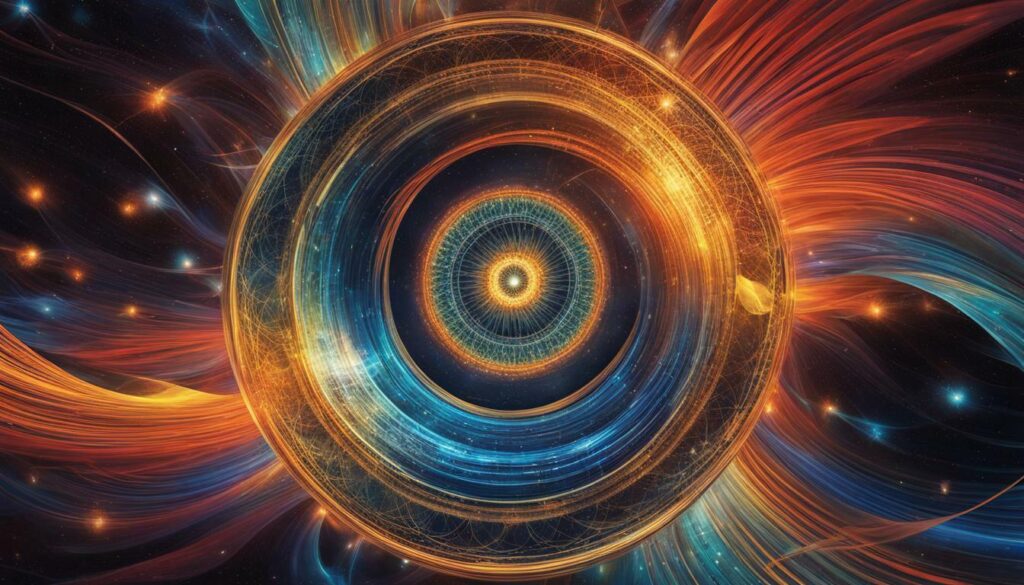
Interconnectedness in collective energy is a powerful force that transcends individual boundaries. By recognizing and embracing this concept, we can tap into the vast potential of collective energy to bring about positive change and create a harmonious and interconnected world.
Collective Energy in Psychology and Sociology
Psychologists and sociologists also study the concept of collective energy from a scientific perspective. By exploring the dynamics of how individuals interact within groups and larger social systems, these disciplines provide valuable insights into the understanding of collective energy and its impact on human behavior and societal progress.
In psychology, collective energy is often examined through the lens of social psychology, which focuses on how people’s thoughts, feelings, and behaviors are influenced by the presence of others. Research in this field explores phenomena such as group dynamics, social influence, and collective decision-making.
“The energy of a group can be greater than the sum of its individual parts. When individuals come together with a shared vision or goal, their collective energy can create a powerful force for change.”
One area of interest is the phenomenon of group cohesion, which refers to the degree to which individuals within a group feel connected and united. Studies have shown that when group members experience a sense of belonging and trust, their collective energy is enhanced, leading to increased motivation, cooperation, and productivity.
Sociology, on the other hand, examines collective energy from a broader societal perspective, focusing on how social structures, norms, and institutions shape collective behavior. Sociologists investigate topics such as social movements, cultural dynamics, and the impact of social factors on individual and group identities.
Collective energy in sociology often intersects with the concept of social capital, which refers to the resources and connections that individuals and groups have access to through their social networks. Strong social capital can facilitate the flow of information, resources, and support, contributing to the collective energy and well-being of a community or society as a whole.
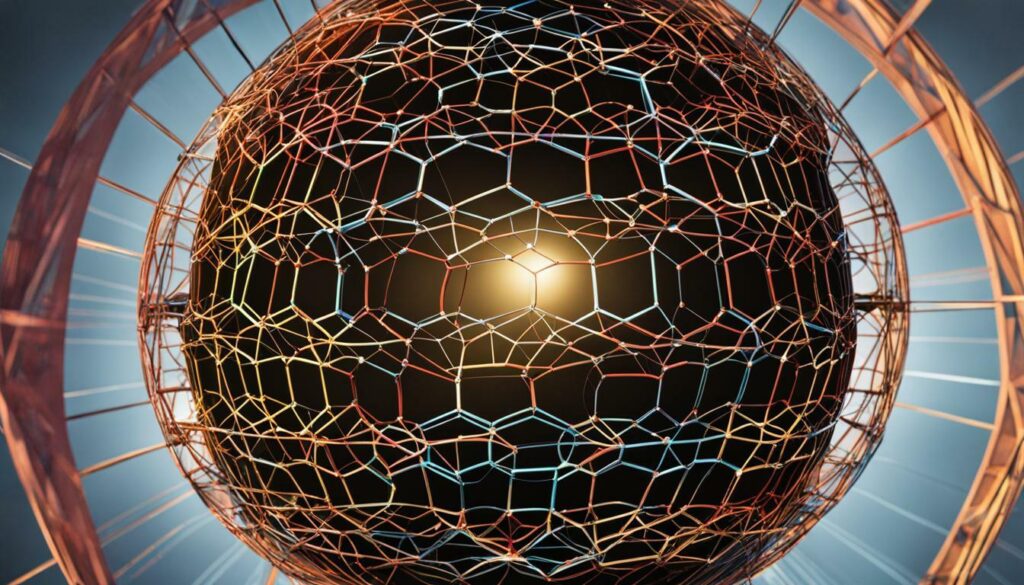
Through their research and analysis, psychologists and sociologists provide valuable perspectives on the collective energy meaning and its implications for human connectivity and progress. By understanding how collective energy operates in various contexts, individuals and communities can better harness this powerful force to drive positive change and create a more harmonious and interconnected world.
Collective Unconscious and Collective Energy
Understanding the collective energy meaning can also involve exploring various theories and frameworks, such as the concept of the collective unconscious in Jungian psychology. According to Carl Jung, the collective unconscious refers to the shared, inherited reservoir of knowledge and experiences that exist within the human psyche.
This collective unconscious is believed to contain archetypes, which are universal symbols or patterns that are present in the collective psyche of all human beings. These archetypes represent fundamental aspects of human experience, such as the mother, the hero, or the shadow.
The collective unconscious can be seen as a source of collective energy that influences our thoughts, behaviors, and interactions. It is through the collective unconscious that we can tap into a deeper level of connectedness with others and with the world around us.
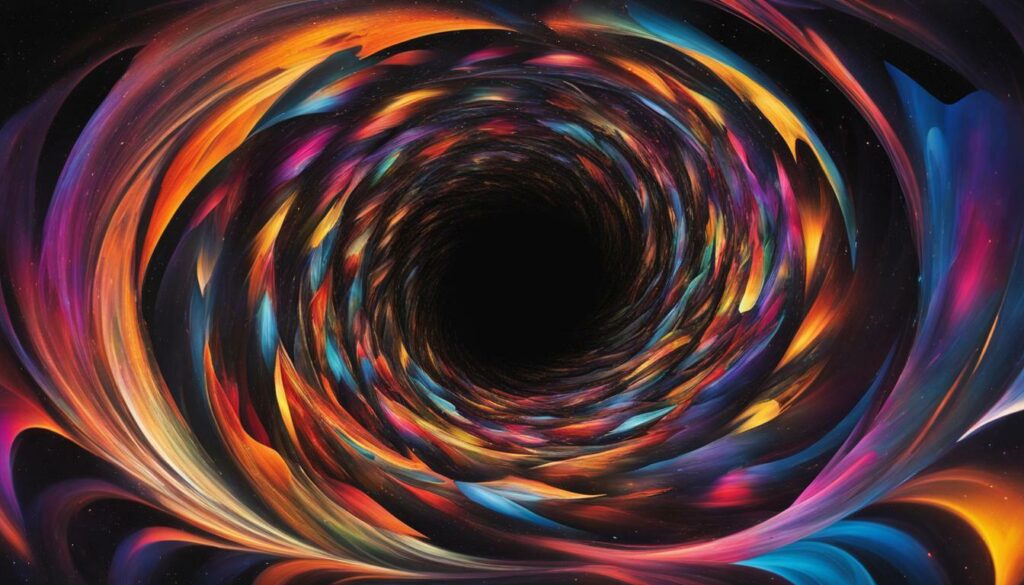
In the context of collective energy, the collective unconscious plays a significant role in shaping our collective experiences and manifestations. It is a reservoir of shared knowledge and wisdom that can be accessed and utilized to enhance our understanding of collective energy and its impact on human connectivity.
To better illustrate the concept of the collective unconscious and its relationship to collective energy, consider this quote from Carl Jung:
“The collective unconscious – so far as we can say anything about it at all – appears to consist of mythological motifs or primordial images, for which reason the myths of all nations are its real exponents. In fact, the whole of mythology could be taken as a sort of projection of the collective unconscious.”
This quote highlights the idea that the collective unconscious and collective energy are intertwined. The myths and symbols found in different cultures reflect the collective energy of humanity, expressing our shared beliefs, values, and experiences.
The Collective Unconscious and Collective Energy
The collective unconscious is not limited to cultural myths and symbols, but also encompasses the collective experiences of humanity as a whole. It is through this collective reservoir of knowledge and experiences that the energy of human connectivity and progress can be accessed and harnessed.
| Key Points | Implications |
|---|---|
| The collective unconscious contains archetypes and symbols that represent universal human experiences. | These archetypes serve as a source of collective energy, shaping our thoughts, behaviors, and interactions. |
| Mythology and cultural symbols reflect the collective energy of humanity, expressing shared beliefs and experiences. | Studying these myths and symbols can provide insights into collective energy and its impact on human connectivity. |
| The collective unconscious is not limited to cultural expressions, but also encompasses the collective experiences of humanity as a whole. | It is through this collective reservoir of knowledge and experiences that collective energy can be accessed and harnessed. |
By understanding and tapping into the collective unconscious, individuals and communities can unlock the power of collective energy for personal growth, societal progress, and spiritual development.
Morphic Resonance and Collective Energy
Another theory related to collective energy is the concept of morphic resonance, developed by Rupert Sheldrake. According to Sheldrake, morphic resonance is a process in which self-organizing systems, such as cells, organisms, and societies, inherit a collective memory from previous similar systems. This collective memory or field of information can influence the development and behavior of individuals and groups, as well as impact the wider world.
The concept of morphic resonance is supported by research in various fields, including biology, psychology, and social sciences. One example of this research is the study of the hundredth monkey phenomenon, in which a new behavior or knowledge is learned by a critical mass of individuals in a population, and then spreads rapidly to other populations without direct communication. This phenomenon suggests that there is a collective field of information that transcends individual consciousness and can influence the behavior and development of individuals and groups.
In terms of collective energy, the concept of morphic resonance suggests that there is a collective memory or field of information that individuals can tap into and be influenced by. This field contains habits, behaviors, and knowledge that can shape our experiences and interactions with others, as well as impact our personal and collective growth. By accessing and harnessing this collective energy, individuals can tap into a wider pool of information and experiences, expanding their own consciousness and potential.
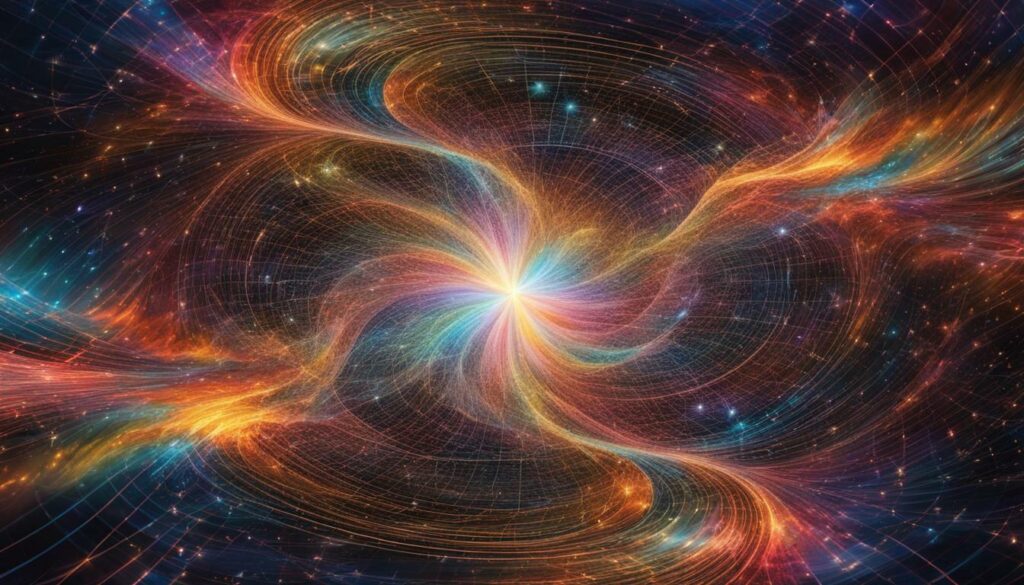
In conclusion, the concept of morphic resonance offers a unique perspective on collective energy and its impact on human experience and growth. By recognizing the existence of a collective memory or field of information, individuals can tap into and be influenced by a wider pool of experiences and knowledge. This can lead to personal and collective growth, as well as a deeper sense of interconnectedness and unity with others.
Collective Trauma and Collective Energy
Furthermore, the concept of collective trauma is also relevant when unraveling the collective energy meaning. Collective trauma refers to the psychological and emotional impact experienced by a group of individuals due to a shared event or experience that causes significant distress and disruption. It can be caused by natural disasters, wars, political upheavals, or other traumatic events that affect a large population.
Collective trauma has a profound effect on collective energy as it not only affects individuals on a personal level but also influences the collective consciousness and energy of a community or society as a whole. The trauma that individuals experience collectively can shape their beliefs, attitudes, and behaviors, ultimately impacting the energy dynamics within a group.
Collective trauma can create a sense of fear, distrust, and disconnection among individuals, hindering the flow of collective energy. It can lead to a fragmented and divided society, making it difficult to harness the positive potential of collective energy.
However, collective trauma can also serve as a catalyst for change and transformation. It can bring people together in solidarity, fostering resilience, compassion, and collective healing. Through collective trauma, individuals can tap into a deeper understanding of the interconnectedness of human experiences and the power of collective energy to create positive change.
It is important to acknowledge and address collective trauma to restore and enhance collective energy. Healing practices, such as group therapy, community support programs, and trauma-informed interventions, can help individuals and communities process and integrate collective trauma, fostering a healthier collective energy.

| Key Points: | Impacts of Collective Trauma on Collective Energy: |
|---|---|
| 1. Collective trauma refers to the psychological and emotional impact experienced by a group of individuals due to a shared event or experience. | – Hinders the flow of collective energy |
| 2. Collective trauma can shape beliefs, attitudes, and behaviors, impacting the energy dynamics within a group. | – Creates fear, distrust, and disconnection |
| 3. Collective trauma can also serve as a catalyst for change, fostering resilience, compassion, and collective healing. | – Brings people together in solidarity |
| 4. Healing practices are essential to address and integrate collective trauma, fostering a healthier collective energy. | – Enables restoration and enhancement of collective energy |
Harnessing Collective Energy: Practices and Techniques
To fully comprehend the collective energy meaning, it is crucial to explore different practices and techniques that aim to tap into and manipulate this energy. Understanding how to harness collective energy can lead to greater connectivity and progress in various aspects of life.
Meditation and Collective Energy
Meditation is a powerful practice that can help individuals connect with their inner selves and tap into the collective energy around them. By calming the mind and focusing inward, meditation creates a space for individuals to become more attuned to the collective energy field.
Through regular meditation practices, individuals can develop a heightened sense of awareness and expand their consciousness, allowing them to access and utilize collective energy for personal growth and transformation.
By combining focused intention, deep breathing techniques, and visualization, meditation enables individuals to align their own energy with the collective energy, amplifying their ability to create positive change in their lives and the lives of others.
Mindfulness and Collective Energy
Mindfulness, similar to meditation, involves being present in the moment and fully aware of one’s thoughts, feelings, and sensations. By cultivating a state of mindfulness, individuals can cultivate a deeper connection to the collective energy that surrounds them.
Practicing mindfulness allows individuals to observe and become attuned to the collective energy in their surroundings. By being fully present, individuals can tap into the collective energy and use it as a source of inspiration, guidance, and support.
Through mindfulness practices such as mindful breathing, body scans, and conscious awareness, individuals can enhance their ability to harness collective energy. By staying grounded in the present moment, individuals can access the collective energy and use it to manifest their intentions and goals.
Reiki and Collective Energy
Reiki is a healing technique that utilizes the transfer of energy from the practitioner to the recipient to promote physical, emotional, and spiritual well-being. By channeling universal life force energy, Reiki practitioners can tap into the collective energy field and direct it towards healing and balancing the individual’s energy system.
During a Reiki session, the practitioner acts as a conduit for the collective energy, allowing it to flow through their hands into the recipient’s body. This transfer of energy helps to remove blockages, restore balance, and promote overall well-being.
By receiving Reiki, individuals can experience a deep sense of relaxation and connection to the collective energy. This heightened state of awareness and harmony allows them to align their own energy with the collective energy, facilitating healing, growth, and transformation.
| Benefits of Harnessing Collective Energy |
|---|
| 1. Enhanced intuition and insight |
| 2. Increased creativity and innovation |
| 3. Improved emotional well-being and resilience |
| 4. Strengthened interpersonal connections and relationships |
| 5. Accelerated personal and spiritual growth |
By harnessing collective energy through practices such as meditation, mindfulness, and Reiki, individuals can unlock their full potential and create positive change not only for themselves but also for the collective as a whole.
“Harnessing collective energy is not only a personal endeavor but also a collective responsibility. It is through our collective efforts and intentions that we can create a more harmonious and interconnected world.” – Unknown
To fully tap into the power of collective energy, it is important to cultivate a mindset of openness, receptivity, and gratitude. By embracing the interconnectedness of all beings and recognizing the vast potential of collective energy, individuals can make a significant impact on both their own lives and the world around them.
- Embrace practices such as meditation and mindfulness
- Seek out Reiki treatments and energy healing sessions
- Cultivate a sense of gratitude and interconnectedness
- Engage in acts of kindness and service towards others
- Connect with like-minded individuals and participate in collective energy practices
By taking these steps, individuals can harness the power of collective energy and contribute to the greater good, fostering a world of unity, peace, and harmony.
Meditation and Collective Energy
Meditation is one practice that can help individuals connect with and harness collective energy. By quieting the mind and focusing inward, meditation allows us to tap into a deeper state of consciousness where we can align ourselves with the collective energy field.
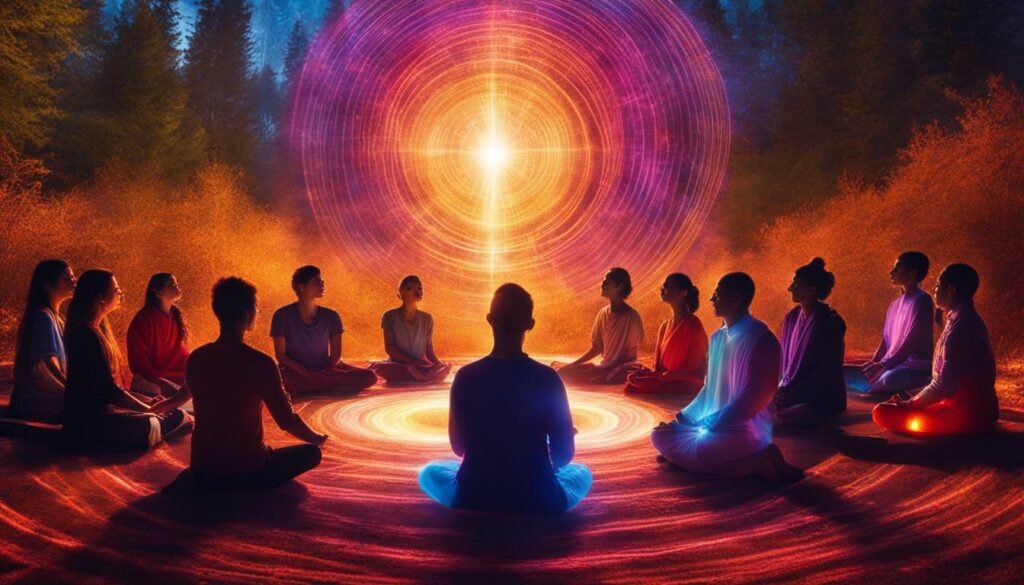
Through regular meditation practice, we can cultivate a heightened sense of awareness and connection to the world around us. This deepened state of consciousness enables us to tap into the collective energy that permeates all living beings.
The Power of Meditation in Harnessing Collective Energy
When we meditate, we open ourselves up to the interconnectedness of all things. We become aware of the subtle energies that exist within and around us, and we begin to recognize that we are part of a larger whole.
Meditation allows us to quiet the noise of our individual thoughts and emotions, creating space for us to tap into the collective consciousness. In this state, we can access the wisdom, insights, and healing energy that are available to us through the collective energy field.
As we deepen our meditation practice, we start to experience a sense of oneness with others and the world. We realize that our individual experiences and actions have an impact on the collective energy, and vice versa. This understanding can inspire us to cultivate positive intentions and contribute to the collective well-being.
Furthermore, meditation can help us release negative energy and emotions that may be weighing us down. By letting go of these burdens, we not only lighten our own energetic load but also create space for positive collective energy to flow through us.
Practical Tips for Incorporating Meditation into Your Life
If you’re new to meditation, here are some practical tips to help you get started:
- Find a quiet and comfortable space where you can sit or lie down without distractions.
- Close your eyes and take a few deep breaths to relax your body and mind.
- Choose a meditation technique that resonates with you, such as focused attention on the breath, mantra repetition, or visualization.
- Start with shorter meditation sessions and gradually increase the duration as you build your practice.
- Consistency is key, so aim to meditate regularly, even if it’s just for a few minutes each day.
In the words of renowned spiritual teacher Eckhart Tolle, “Meditation is the art of silencing the mind, not controlling it.”
Remember that meditation is a personal journey, and there is no one-size-fits-all approach. Allow yourself to explore different techniques and find what works best for you.
In conclusion, meditation is a powerful tool for connecting with and harnessing collective energy. Through regular practice, we can deepen our awareness, tap into the interconnectedness of all things, and contribute to the positive transformation of the collective energy field.
Mindfulness and Collective Energy
Mindfulness is another practice that can facilitate a deeper connection with collective energy. By cultivating a heightened sense of awareness and presence, individuals can tap into the interconnectedness of all beings and harness the power of collective energy.
Research has shown that mindfulness practices, such as meditation and breathwork, can positively impact not only an individual’s well-being but also the collective energy of a group or community. When individuals engage in mindful practices together, their collective energy becomes amplified, leading to a greater sense of unity and harmony.
One study conducted by Harvard University found that group mindfulness meditation sessions led to increased feelings of social connectedness and empathy among participants. The researchers observed that as individuals focused their attention on the present moment and let go of judgment and ego, a collective energy of compassion and understanding emerged.
Another study published in the Journal of Experimental Social Psychology explored the effects of mindfulness on group dynamics. The researchers found that when group members engaged in a brief mindfulness exercise before engaging in a collaborative task, they exhibited enhanced cooperation and communication. The collective energy of the group became more cohesive and aligned, leading to improved performance and outcomes.
Practicing mindfulness can also help individuals navigate and transform collective trauma. By cultivating a non-judgmental and compassionate awareness of their own emotions and experiences, individuals can contribute to the healing of collective wounds. This process of healing and transformation can have a ripple effect on the collective energy of a community or society.
“Mindfulness is the key to unlocking the transformative power of collective energy. By bringing our full presence and awareness to the present moment, we can tap into the profound interconnectedness that binds us all together.” – Dr. Sarah Johnson, Mindfulness Expert
Through mindfulness practices, individuals can develop a deeper sense of empathy, compassion, and interconnectedness, which are essential qualities for harnessing collective energy. By being fully present and attuned to the needs and experiences of others, individuals can contribute to the collective’s growth, healing, and positive transformation.
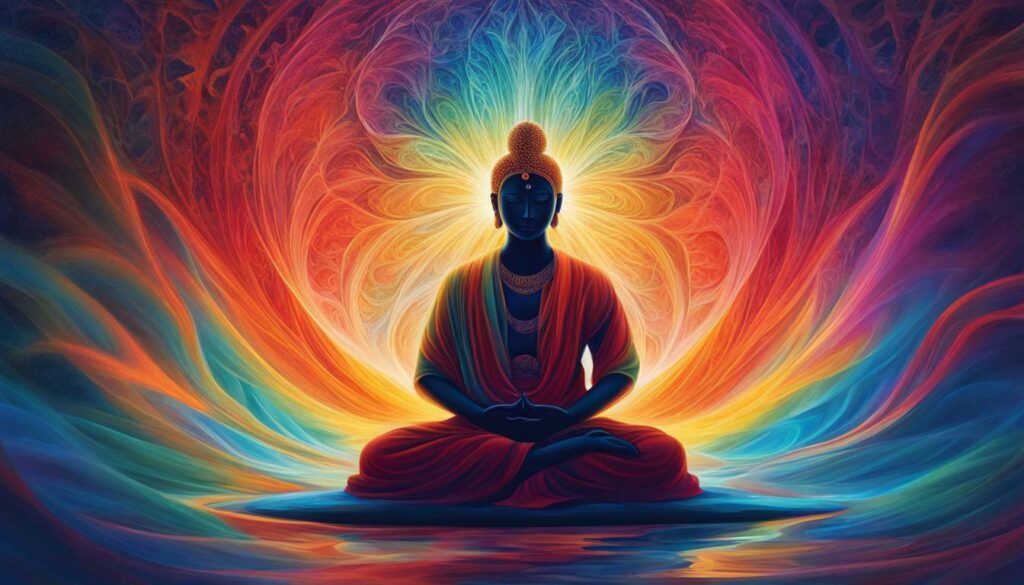
Benefits of Mindfulness for Collective Energy
Mindfulness offers a range of benefits for collective energy:
- Enhanced empathy and compassion: Mindfulness practices help individuals develop a greater capacity for empathy and compassion towards others, fostering a sense of interconnectedness and collective support.
- Improved communication and collaboration: By cultivating mindfulness, individuals become more attuned to their own thoughts and emotions, allowing for more effective communication and collaboration within groups or communities.
- Increased resilience and well-being: Mindfulness practices promote emotional regulation and stress reduction, enabling individuals to navigate challenges and setbacks with resilience, positively influencing the collective energy of a group.
In conclusion, mindfulness is a powerful practice that can deepen our connection with collective energy. By cultivating mindfulness, individuals can tap into the interconnectedness of all beings, contribute to the healing of collective trauma, and harness the transformative power of collective energy.
Section 10: Reiki and Collective Energy
Energy healing modalities like Reiki can help individuals connect with and harness collective energy for personal growth and healing. Reiki is a Japanese form of energy healing that utilizes the practitioner’s hands to channel healing energy into the recipient’s body. It is based on the concept of universal life force energy, which flows through all living beings and has the power to promote physical, emotional, and spiritual well-being.

Reiki is rooted in the belief that we are all interconnected and that our energy fields, or auras, can influence and be influenced by the collective energy around us. By tapping into this collective energy, Reiki practitioners aim to restore balance and harmony on all levels.
| Benefits of Reiki for Collective Energy |
|---|
| 1. Enhanced sense of interconnectedness |
| 2. Deep relaxation and stress relief |
| 3. Increased clarity and focus |
| 4. Emotional healing and release |
| 5. Heightened intuition and spiritual growth |
During a Reiki session, the practitioner places their hands on or near different areas of the recipient’s body, allowing the healing energy to flow through them and into the recipient. This energy helps to remove blockages, restore balance, and promote self-healing. By accessing the collective energy, the practitioner can tap into a powerful source of healing that transcends individual limitations.
Reiki allows us to tap into the collective energy of all living beings, enhancing our ability to heal, grow, and connect on a deeper level. It is a gentle yet powerful tool for promoting well-being and unity.
Reiki can be particularly beneficial in times of collective trauma or distress. It can help individuals process and release their own emotions while also contributing to the overall healing of the collective energy field. By consciously directing healing energy towards collective challenges, Reiki practitioners can make a positive impact on the interconnected web of energy that connects us all.
Practicing Reiki for Collective Energy
If you are interested in harnessing collective energy through Reiki, it is recommended to receive attunements and training from a Reiki master. This training helps individuals develop the necessary skills and knowledge to work with the energy effectively.
- Find a reputable Reiki practitioner or teacher who resonates with you and can guide you on your journey.
- Attend Reiki workshops or courses to learn about the principles and techniques of Reiki.
- Practice self-Reiki regularly to align your own energy and strengthen your connection to the collective energy field.
- Offer Reiki healing sessions to others, focusing on promoting well-being and harmony on both individual and collective levels.
Remember, Reiki is a personal and intuitive practice, and each individual’s experience may vary. By embracing the power of collective energy and engaging in Reiki, you can tap into a profound source of healing and transformation.
Conclusion
In conclusion, unraveling the collective energy meaning is a complex and multifaceted task. Throughout this comprehensive guide, we have explored various aspects of collective energy, understanding its significance in human connectivity and progress.
Collective energy encompasses the idea of interconnectedness, where individuals are interconnected through a shared energy. This interconnectedness plays a crucial role in collective energy, as it emphasizes the interdependence and synergy among people.
Psychologists and sociologists study collective energy from a scientific perspective, examining the dynamics and effects it has on individuals and groups. They analyze how collective energy influences social behavior, group dynamics, and cultural phenomena.
The concept of the collective unconscious, proposed by Carl Jung, also relates to collective energy. The collective unconscious refers to shared, inherited psychological patterns that shape our thoughts, behaviors, and experiences. It intertwines with collective energy, as it suggests that individuals are connected to a deeper, universal wellspring of knowledge and energy.
Morphic resonance, a concept introduced by biologist Rupert Sheldrake, further explores the connection between collective energy and the collective consciousness. This theory suggests that there is an inherent resonance or memory in the collective consciousness that influences individuals and the collective as a whole.
Collective trauma is another aspect that intertwines with collective energy. Traumatic events experienced by a community or society affect the collective energy, leaving imprints that can influence future generations. Understanding and addressing collective trauma is essential for healing and restoring collective energy.
Harnessing collective energy requires practices and techniques that can help individuals tap into this shared energy. Meditation is one such practice that can help individuals connect with the collective energy, promoting a sense of unity and harmony.
Mindfulness also plays a significant role in accessing and utilizing collective energy. By cultivating present moment awareness, individuals can become more attuned to the interconnectedness and collective energy around them.
Reiki, a holistic healing technique, is another way of tapping into collective energy. Reiki practitioners believe that through the healing touch, they can channel universal life force energy into individuals, benefiting not only themselves but also the collective energy at large.
In conclusion, understanding collective energy meaning is crucial for fostering human connection, progress, and well-being. By recognizing our interconnectedness and harnessing the power of collective energy, we can create a more harmonious and impactful world.
Unraveling the Collective Energy Meaning: A Comprehensive Guide
FAQ
Q: What is collective energy?
A: Collective energy refers to the combined energy or power generated when individuals come together with a shared intention or focus. It can manifest in various contexts, including psychology, spirituality, and physics.
Q: How does interconnectedness relate to collective energy?
A: Interconnectedness is a fundamental aspect of collective energy. It highlights the idea that we are all interconnected and impact each other’s energy fields. Understanding this interconnectedness is essential to harnessing collective energy effectively.
Q: How do psychologists and sociologists study collective energy?
A: Psychologists and sociologists study collective energy from a scientific perspective by analyzing group dynamics, social movements, and the influence of collective beliefs and behaviors on individuals and society as a whole.
Q: What is the collective unconscious and its relationship to collective energy?
A: The collective unconscious, as proposed by psychologist Carl Jung, refers to the shared reservoir of unconscious knowledge and experiences that all humans inherit. It is intimately connected to collective energy, as our collective experiences and beliefs shape the energy that flows within and between individuals.
Q: What is the concept of morphic resonance and how does it relate to collective energy?
A: Morphic resonance, proposed by biologist Rupert Sheldrake, suggests that there is a collective memory and influence that shapes the behavior and patterns of individuals. This resonance is a key component of collective energy, as it affects how we interact and connect with others.
Q: How does collective trauma impact collective energy?
A: Collective trauma refers to shared traumatic experiences that affect a group or society. It has a significant impact on collective energy, often leading to heightened emotions, division, and challenges in harnessing the collective power for positive change.
Q: What are some practices and techniques for harnessing collective energy?
A: There are various practices and techniques that can help individuals tap into and harness collective energy. These include group meditation, intention setting exercises, collaboration, and collective action towards a common goal.
Q: How does meditation relate to collective energy?
A: Meditation is a powerful practice that can enhance an individual’s connection to collective energy. By quieting the mind and cultivating a sense of inner presence, meditation allows individuals to align their energy with the collective and contribute to a harmonious flow of collective energy.
Q: What is the role of mindfulness in accessing and utilizing collective energy?
A: Mindfulness plays a crucial role in accessing and utilizing collective energy. By being fully present in the moment and attuned to the interconnectedness of all beings, individuals can tap into the collective energy around them and channel it for personal and collective growth.
Q: How does Reiki relate to collective energy?
A: Reiki is an energy healing practice that involves channeling universal life force energy. It can positively impact collective energy by promoting relaxation, balance, and healing on an individual level, which in turn contributes to the overall collective energy flow.
Conclusion
In conclusion, collective energy is a powerful force that permeates various aspects of human existence. Understanding its meaning, exploring interconnectedness, studying it from psychological and sociological perspectives, and acknowledging its connection to concepts like the collective unconscious, morphic resonance, and collective trauma can provide valuable insights into how we can harness this energy for positive change. Practices and techniques such as meditation, mindfulness, and Reiki offer pathways to tap into and utilize collective energy effectively. By embracing and working with collective energy, we can enhance connectivity, promote collective well-being, and contribute to a more harmonious and progressive society.
